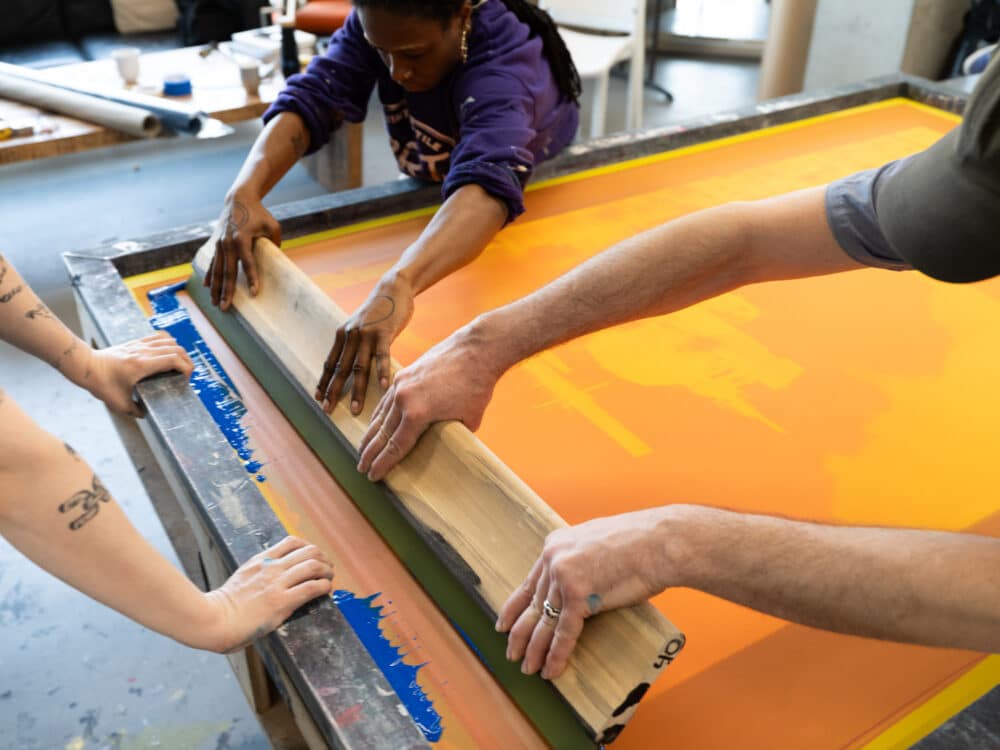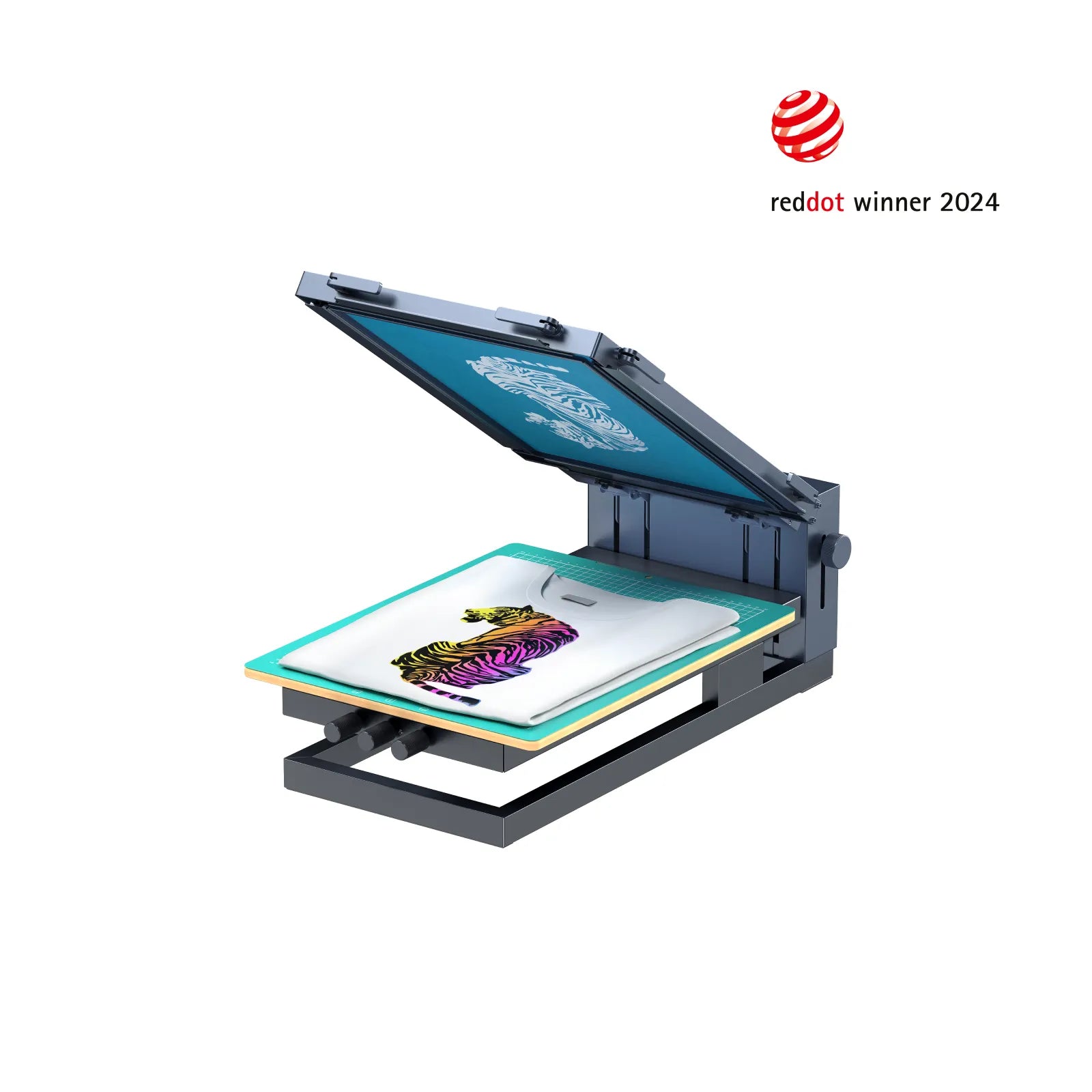Discover the Numerous Kinds Of Screen Printing Techniques for Your Next Task
Screen printing uses a diverse range of strategies that can boost any innovative job. From typical techniques like serigraphy to contemporary advancements such as direct-to-garment printing, each method has its one-of-a-kind benefits. Specialty alternatives, including metallic and environment-friendly inks, present even a lot more possibilities. Recognizing these strategies can significantly affect the last outcome. However, the obstacle hinges on picking one of the most ideal approach for certain requirements and preferred impacts. What variables should one take into consideration?

The Basics of Screen Printing
Screen printing may seem complicated, it is fundamentally a simple procedure that entails moving ink through a mesh screen onto numerous surface areas. The method begins with the creation of a stencil, which specifies the style to be published. This stencil is connected to a mesh screen, commonly made of polyester or nylon. When the pattern remains in area, ink is put on the screen and pushed with the mesh using a squeegee, causing the desired pattern being published on the underlying material.
Screen printing can be performed on a variety of substrates, consisting of paper, fabric, and plastic, making it a versatile option for different projects. The procedure enables vivid shades and elaborate layouts, making it popular in markets such as style, advertising, and art. Recognizing these fundamentals equips individuals with the foundational understanding called for to explore advanced strategies in screen printing.
Traditional Screen Printing Techniques
Typical screen printing methods have actually been employed for centuries, protecting the workmanship and creativity of this method. This method uses a mesh screen to move ink onto a substratum, such as material or paper, enabling lively and durable designs. The process begins with developing a pattern, which blocks specific locations of the screen to manage where the ink will be used.
One popular strategy is serigraphy, commonly used for imaginative prints and restricted editions. An additional is the usage of water-based inks, which are eco-friendly and supply a soft feel on fabrics - 10:9 Design Abilene. Furthermore, conventional approaches can include manual printing, where artisans use ink with a squeegee, making certain accuracy and interest to detail
These methods stay valued in the market for their tactile quality and the one-of-a-kind textures they create, appealing to both customers and developers that value the heritage of screen printing.
Digital Screen Printing Innovations
As the need for faster manufacturing and personalization in the printing sector has actually surged, electronic screen printing innovations have actually become a game-changer. This technology blends standard screen printing approaches with electronic procedures, permitting rapid prototyping and detailed designs that were previously hard to attain. One significant improvement is the introduction of direct-to-garment (DTG) printing, which assists in top notch, full-color prints on numerous fabrics without the demand for displays. Additionally, developments in ink formulations have resulted in environment-friendly alternatives that maintain vivid colors while minimizing environmental effect. The usage of automated systems further streamlines production, reducing labor expenses and boosting accuracy. These developments not just cater to tiny batch orders and individualized styles however additionally enable quicker turnaround times, making them suitable for organizations concentrated on meeting client demands in a fast-paced market. Digital screen printing, subsequently, represents a vital evolution in the domain name of printing techniques.
Specialty Screen Printing Methods
Exploring specialty screen printing methods discloses a varied variety of strategies that press the boundaries of creative thinking and performance in the printing sector. Amongst these, glow-in-the-dark inks supply a distinct visual impact, making designs come alive in low-light conditions. Metal inks, known for their sparkling surface, include a touch of high-end to printed products. Another cutting-edge approach is discharge printing, which removes color from the textile rather than adding ink, causing a soft, classic feeling. High-density printing produces an elevated appearance on the surface area, improving tactile interaction. Furthermore, water-based inks are obtaining popularity for their lively shades and minimized ecological impact. Each of these specialty methods deals with certain design demands, allowing artists and brands to create standout products that reverberate with their target markets. By leveraging these approaches, companies can elevate their screen printing tasks to brand-new elevations, ensuring unforgettable perceptions.
Eco-Friendly Screen Printing Options
Environment-friendly screen printing choices are acquiring grip as the sector changes towards sustainability. Lasting ink choices and using naturally degradable products are essential elements in lowering the environmental effect of the printing procedure. By taking on these practices, screen printers can contribute to an extra sustainable future while preserving top notch results.
Lasting Ink Selections

Biodegradable Materials Usage
As the screen printing sector evolves, the incorporation of naturally degradable materials is becoming increasingly important for eco mindful methods. Manufacturers and developers are now exploring inks and substratums made from natural, renewable energies that decay a lot more efficiently than typical counterparts. These eco-friendly choices minimize plastic waste and reduce ecological impact, aligning with the growing need for sustainable products.
Typical examples include water-based inks and organic cotton fabrics, both of which reduce damaging chemicals and advertise eco-friendliness. Brands that take on these products often boost their market appeal, drawing in customers who focus on sustainability. As understanding of environmental problems proceeds to rise, the shift towards naturally degradable products in screen read more printing is likely to obtain energy, fostering a greener industry requirement.
Picking the Right Strategy for Your Task
Exactly how can one figure out one of the most appropriate screen printing method for a details task? The decision rests on numerous factors, consisting of the product to be published on, the intricacy of the style, and the preferred production quantity - 10:9 Design reviews. For example, direct-to-garment printing is excellent for intricate styles with numerous shades, while standard screen printing succeeds for bigger runs of simpler graphics
In addition, consideration of the end-use of the printed item is important. For exterior applications, strategies that supply resilience and weather resistance, such as plastisol ink, may be liked. On the other hand, environmentally-conscious projects may benefit from naturally degradable products or water-based inks.
Ultimately, comprehending the task's unique demands permits an informed option, ensuring both aesthetic allure and practical longevity. By reviewing layout intricacy, material compatibility, and manufacturing range, one can efficiently pick one of the most suitable screen printing method to fulfill their project's objectives.
Regularly Asked Questions
What Is the Background of Screen Printing?
Screen printing stemmed in old China around 1000 AD, progressing through Japan and Europe. By the 20th century, it came to be preferred in industrial art and fashion, revolutionizing how designs were produced and dispersed internationally.

How Do I Prepare Artwork for Screen Printing?
To prepare art work for screen printing, one need to guarantee high resolution, use an ideal color mode, produce different layers for each color, and convert text to outlines, assuring compatibility with the printing process and desired end result.
What Products Are Finest for Screen Printing?
The very best materials for screen printing include top notch inks, durable screens, and appropriate substratums like cotton, polyester, or blends. In addition, using suitable emulsion and mops can enhance the printing procedure and last outcomes.
Can I Evaluate Print in the house?
Yes, screen printing at home is feasible. With the ideal materials, arrangement, and strategies, people can develop top quality prints. However, careful consideration of work space and equipment is necessary for effective outcomes.

What Prevail Errors in Screen Printing?
Typical mistakes in screen printing include improper exposure times, inadequate ink uniformity, misalignment of screens, inadequate cleansing of materials, and neglecting to test prints. These errors can compromise the quality and precision of the end product.
Screen printing might appear facility, it is basically a simple process that involves moving ink via a mesh screen onto numerous surfaces. As the demand for faster production and personalization in the printing market has actually surged, digital screen printing innovations have actually arised as a game-changer. Discovering specialty screen printing approaches discloses a diverse array of strategies that press the boundaries of creative thinking and performance in the printing industry. The ideal materials for screen printing include top quality inks, resilient displays, and ideal substratums like cotton, polyester, or blends (10:9 Design Texas). Usual blunders in screen printing include inappropriate exposure times, insufficient ink consistency, misalignment of screens, insufficient cleansing of materials, and ignoring to test prints